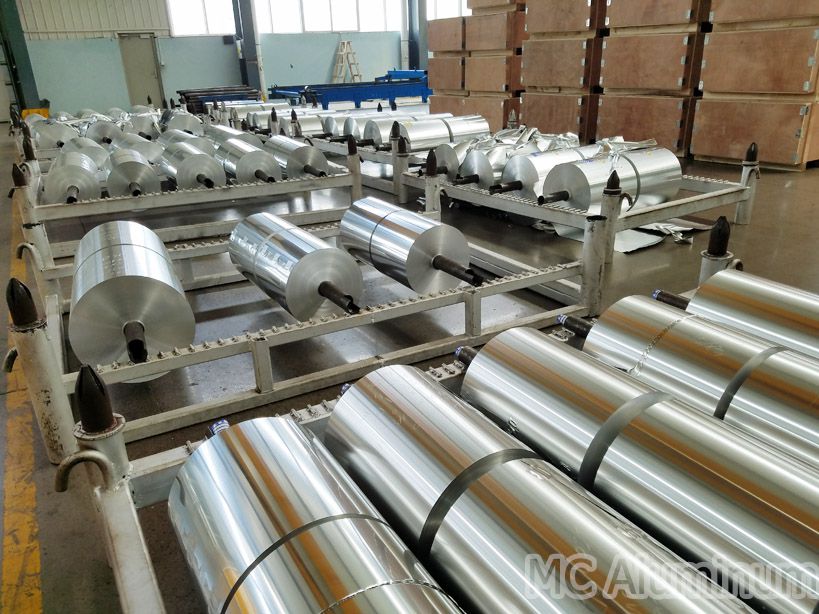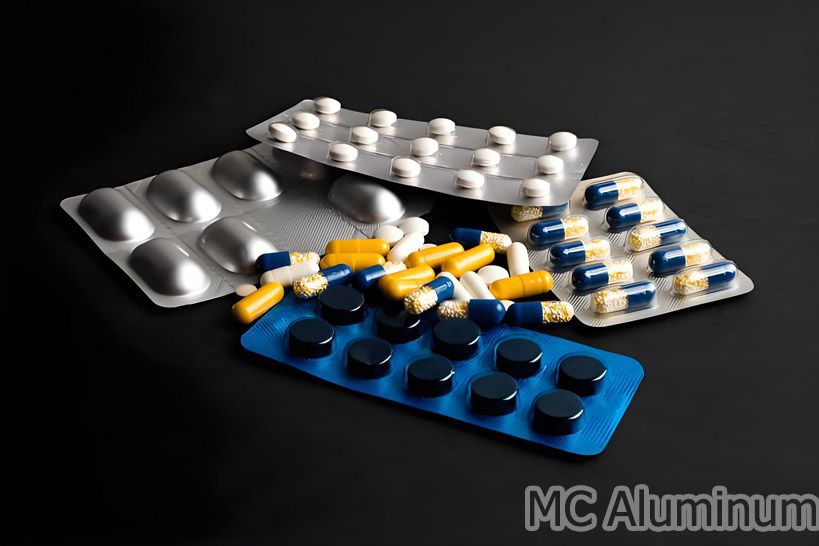Pill aluminum foil packaging is a common form of medical packaging, usually used to protect solid medicines (such as tablets, capsules, pills, etc.). It has excellent barrier properties, moisture resistance and light-shielding properties, and can effectively protect the quality of pills. Aluminum foil can be used in combination with plastic film, paper and other materials to improve the strength and sealing of the packaging, ensuring the stability and safety of the drug during storage, transportation and use.

Pill Aluminum Foil Packaging Type
1.Blister packaging
Structure: aluminum foil cover + plastic base (PVC, PVDC or PP)
Features: Aluminum foil is moisture-proof, anti-oxidation, and light-shielding; the base is transparent for easy viewing; easy to break the tablets by hand.
2.Cold-formed aluminum foil packaging
Structure: OPA (nylon)/aluminum foil/PVC (or PP) composite material
Features: suitable for high-barrier drugs; no transparent part; puncture-resistant, suitable for harsh environments.
3.Strip aluminum foil packaging
Structure: aluminum foil or aluminum-plastic composite material
Features: Each tablet is independently sealed; high barrier properties; mostly used for single-dose packaging of special drugs.
Technical requirements for aluminum foil materials
Aluminum foil cover material:
| Alloy | 8011-H18 or 8021-O |
| Thickness | 20-30 μm, 25 μm is commonly used |
| Coating | The surface of the aluminum foil needs to be coated with heat-seal lacquer (suitable for PVC, PVDC or PP heat sealing). |
| Performance | 1.High barrier properties (waterproof, oxygen-proof, light-proof). 2.Moderate heat seal strength ensures easy opening. 3.Aluminum plastic composite substrate (for cold forming): |
OPA/Al/PVC: Typical thickness OPA 25 μm / Al 45 μm / PVC 60 μm.
Barrier properties: The aluminum foil layer provides excellent gas and water vapor barrier properties.
Aluminum foil for strip packaging:
Single or double layer aluminum foil, usually with PE or heat seal lacquer coating.
Advantages of aluminum foil packaging for pills
1.High barrier properties: protect drugs from oxygen, moisture and light.
2.Extend the shelf life of drugs: ensure that the active ingredients of drugs are not damaged by the external environment.
3.Portability: small and light, easy to carry and use.
4.Sanitary: one-time use to avoid contamination of other tablets.
5.Customizability: the appearance and structure can be designed according to drug specifications and brand requirements.

Application scenarios
1.Conventional drugs: vitamins, painkillers, antibiotics, antiallergic drugs, etc.
2.Special drugs: Chinese medicine preparations that require high barrier packaging, photosensitive drugs (such as some contraceptives).
3.High-end medical scenarios: drugs used for export, long storage time or stored under special conditions.
